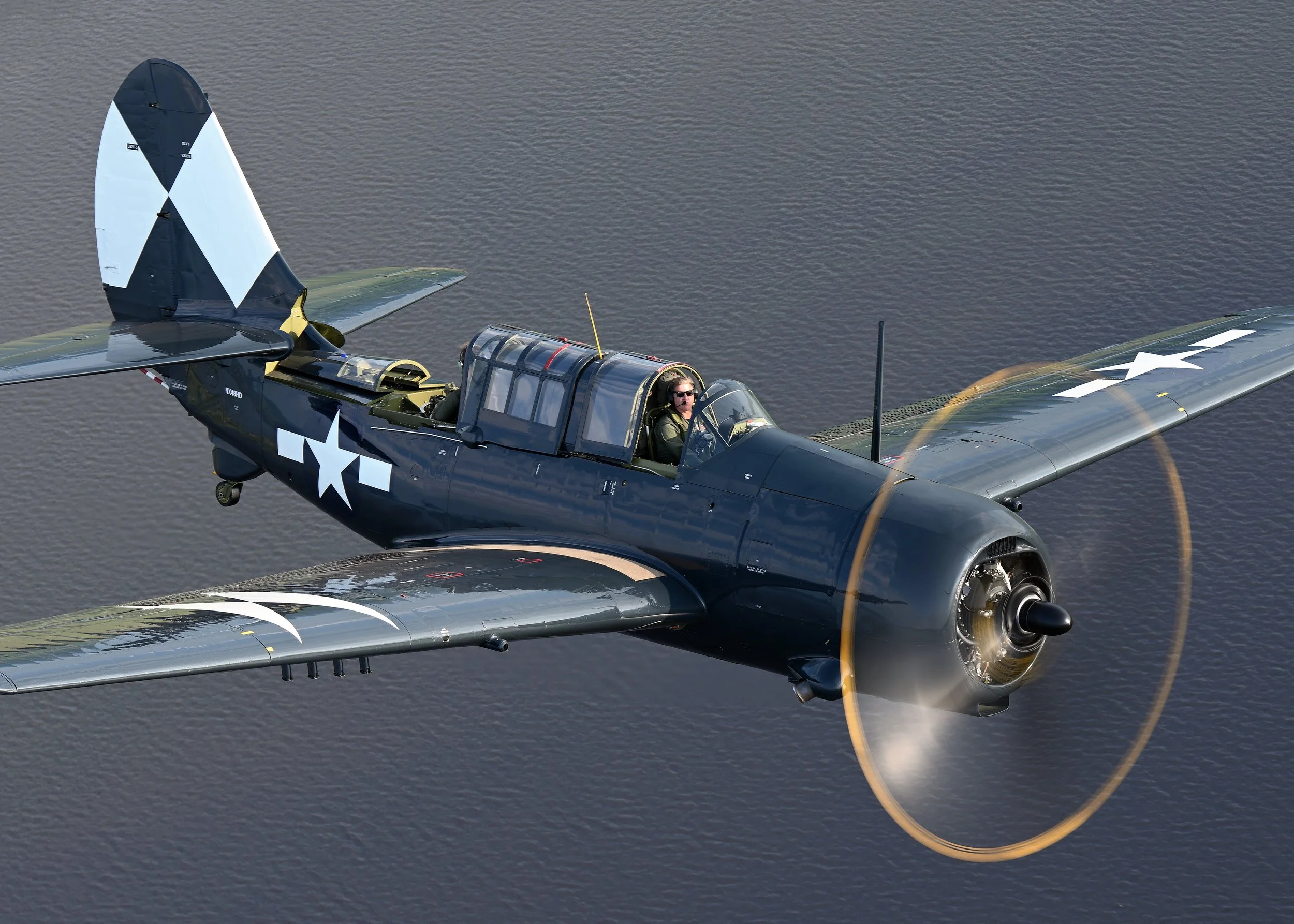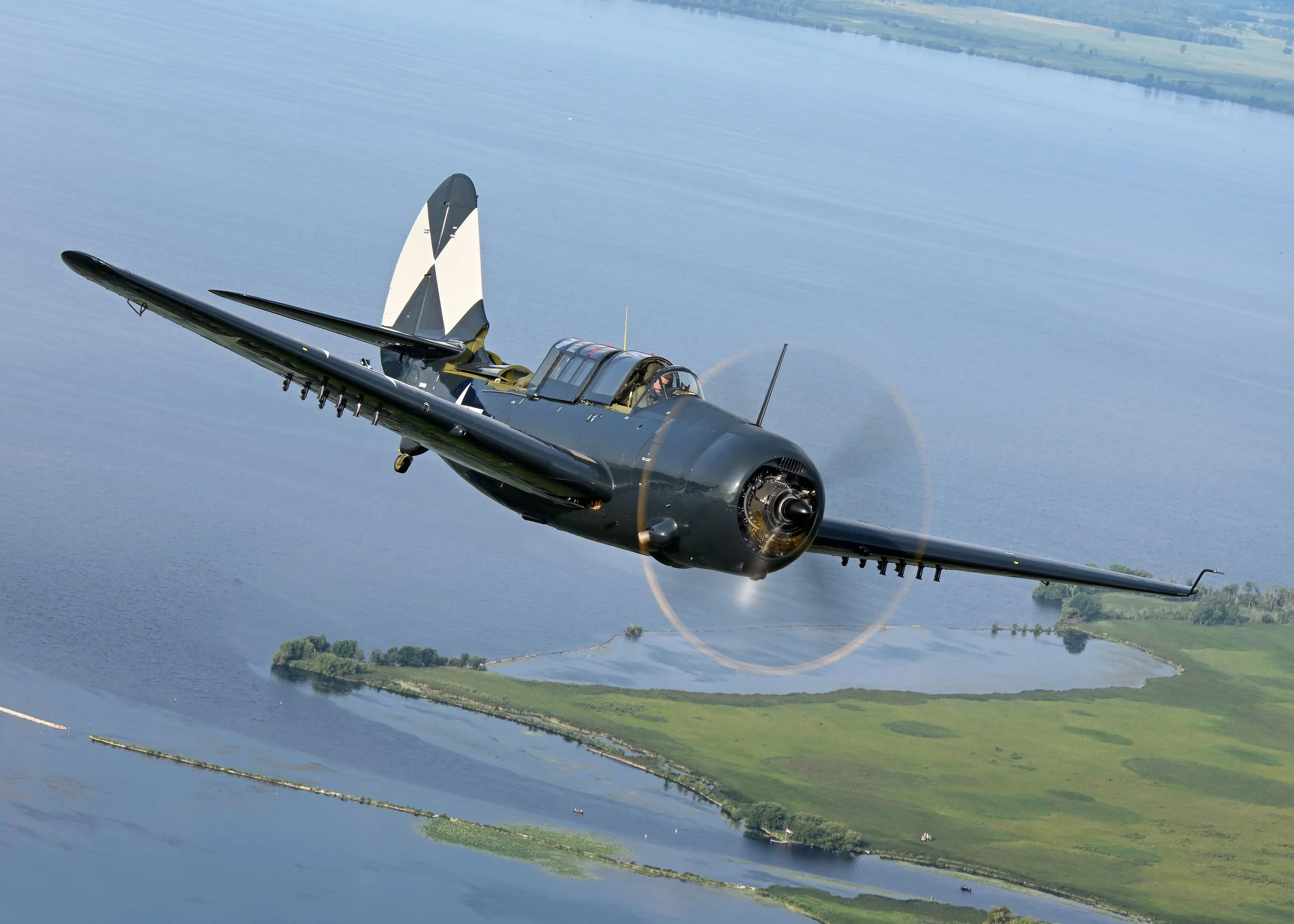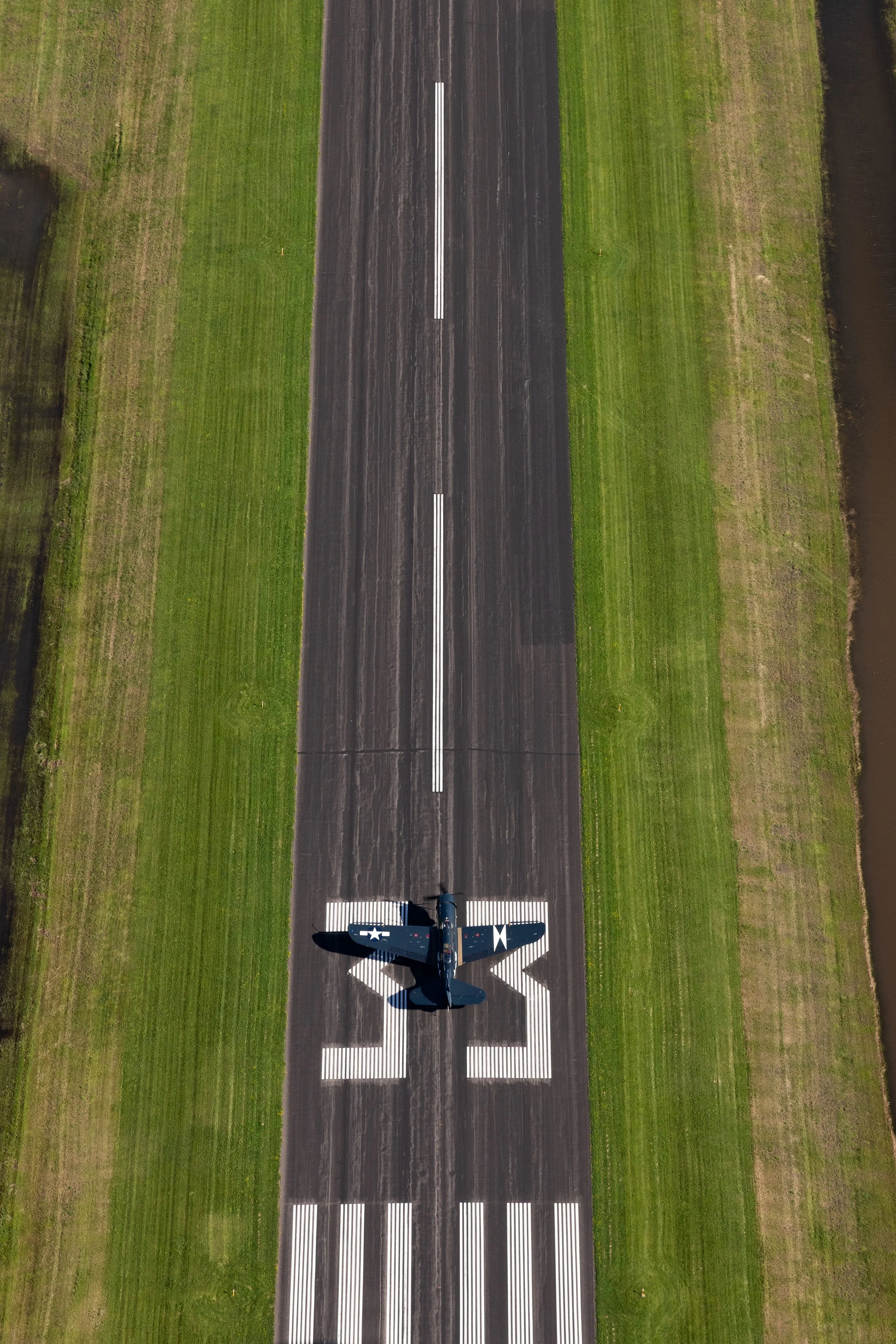
Grumman SB2C-5
Helldiver
Purpose and Production
The SB2C Helldiver is a dive bomber developed by Curtiss-Wright for the US Navy during WWII. The Helldiver, also known as “The Big-tailed Beast,” was designed to replace the SBD Dauntless. The early versions were not well liked by pilots or carrier crews. But Curtiss made substantial improvements to the the design, and the Helldiver became extremely succesful the last year and a half of the war. The last design (SB2C-5) had a bigger engine, a four bladed propeller, and a larger fuel capacity. In total, there were over 7,000 Helldivers built from 1943 until 1945. 970 of those being a dash 5 variant.
Overall, the Helldiver was tough and infuenced the war in the Pacific in major ways leading the US to Victory.
History of our Helldiver
Grumman SB2C-5 Helldiver, Bu. No. 83393, rolled off the assembly line and was accepted by the U.S. Navy in New Port, Rhode Island on May 3, 1945. The next day, on May 4, it was sent to the NAF in Dahlgren, Virginia for training purposes. On July 24, 1945, the aircraft and crew took off for a training mission, but suddenly lost power in the climb. The pilot radioed the control tower for a go-around, but ended up performing a controlled emergency landing in the woods near by. The aircraft was scrapped by the Navy on July 31, 1945.
After many years of being in storage, the Fagen family purchased the wreck in 2006 with the mission to restore the Helldiver to airworthy condition again. Upon purchase, the fuselage was sent out for immediate rebuild at Wichita Air Service, in Wichita, Kansas. In 2008, the Helldiver arrived in Granite Falls, Minnesota where restoration would continue for the next several years. Tri-State Aviation in Wahpeton, North Dakota completed the center section in 2020, and shortly afterwards began working on the outer wings. Fagen Fighters Restoration completed majority of the work in house, including: machining many parts, fitting the fuselage, mating the center section and fuselage, all major systems and propeller and engine installation, completion of the wings, painting and final assembly.
Unfortunately, after the war most Helldivers were scrapped and very few survive today. There is only one other Helldiver flying with the Commemorative Airforce in Texas. As of today, this is the second flying Helldiver in the world.





